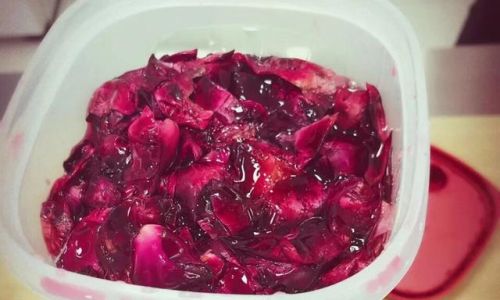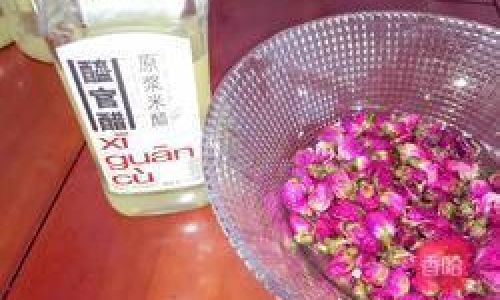Table of content
Introduction
Rose vinegar, a delightful and aromatic condiment, has been cherished for centuries for its unique flavor and myriad health benefits. This elixir of roses combines the sweet, floral essence of fresh roses with the tangy, acidic taste of vinegar, creating a symphony of tastes that can elevate any dish. Whether you’re a seasoned chef looking to add a touch of elegance to your culinary creations or a home cook eager to experiment with new ingredients, making rose vinegar at home is a rewarding endeavor. In this comprehensive guide, we’ll walk you through the process of crafting rose vinegar with fresh roses, from selecting the perfect blooms to bottling your finished product.
Selecting the Right Roses
The first step in making rose vinegar is choosing the right roses. While any variety of rose can be used, certain types yield better results. Opt for fragrant, organic roses that are free from pesticides and chemicals. Hybrid teas, damasks, and old-fashioned roses are particularly well-suited for this purpose due to their strong aroma and robust petal structure. Avoid using roses that have been sprayed with insecticides or grown in polluted soil, as these contaminants can affect the taste and purity of your final product.
When selecting your roses, look for blooms that are fully opened and vibrant in color. Avoid roses that are wilting, have spots, or show signs of disease. The fresher the roses, the better the quality of your rose vinegar will be. If possible, pick the roses early in the morning when their petals are still dew-kissed, as this enhances their fragrance and freshness.
Preparing the Roses
Once you’ve gathered your roses, it’s time to prepare them for the vinegar-making process. Begin by gently removing the petals from the stems. Be careful not to tear or crush the petals, as this can release bitter juices that will affect the taste of your vinegar. Once all the petals are separated, rinse them thoroughly under cold running water to remove any dirt, dust, or insects.

Pat the petals dry using a clean kitchen towel or paper towels. It’s important to remove as much moisture as possible, as excess water can cause mold or bacteria to grow during fermentation. You can also air-dry the petals by laying them out on a baking sheet lined with parchment paper and leaving them in a well-ventilated area for a few hours.
Choosing the Vinegar Base
The type of vinegar you use as the base will greatly influence the flavor of your rose vinegar. For a classic, tangy taste, apple cider vinegar is a popular choice. It has a mild, slightly sweet flavor that complements the floral notes of the roses. White wine vinegar, rice vinegar, or even balsamic vinegar can also be used, depending on your preferred taste profile.
When selecting your vinegar, look for high-quality, unfiltered, and organic options. Avoid vinegars that contain added sugars, preservatives, or artificial flavors, as these can detract from the purity and authenticity of your rose vinegar.
Making the Rose Vinegar
Now that you have your prepared roses and vinegar base, it’s time to start the vinegar-making process. There are several methods you can use, ranging from simple infusion to more complex fermentation techniques. For beginners, a straightforward infusion method is recommended.
Simple Infusion Method
-
Jar Preparation: Start by sterilizing a large, glass jar with a tight-fitting lid. This can be done by boiling the jar and lid in water for a few minutes or running them through the dishwasher on the sanitize setting.
-
Layering: Place a layer of rose petals in the bottom of the jar. Pour enough vinegar over the petals to fully submerge them. Continue layering petals and vinegar until the jar is nearly full, leaving about an inch of headspace at the top.
-
Infusion: Secure the lid tightly and place the jar in a cool, dark place. Allow the mixture to infuse for at least two weeks, stirring occasionally to ensure that the petals are evenly soaked in the vinegar. The longer you let it infuse, the stronger the rose flavor will be.

-
Straining: After the desired infusion time, strain the vinegar through a fine-mesh sieve lined with cheesecloth or a coffee filter. This will remove the petals and any sediment, leaving you with a clear, rose-infused vinegar.
-
Bottling: Pour the strained vinegar into clean, sterile bottles. Label the bottles with the date and any other relevant information, and store them in a cool, dark place. Your rose vinegar will continue to develop flavor over time and can be used for up to a year.
Advanced Fermentation Method
For those who want to take their rose vinegar-making to the next level, a more complex fermentation method can be used. This involves adding a starter culture, such as a vinegar mother or SCOBY (Symbiotic Culture of Bacteria and Yeast), to the rose petal and vinegar mixture to initiate fermentation.
-
Prepare the Starter Culture: Obtain a vinegar mother or SCOBY from a previous batch of vinegar or purchase one online. Place it in a small bowl of the chosen vinegar base and let it sit for a few days to acclimate.
-
Combine Ingredients: Follow the same layering process as in the simple infusion method, but add the acclimated starter culture to the jar before sealing it.
-
Fermentation: Place the jar in a warm, dark place (around 75-85°F or 24-29°C) to encourage fermentation. Cover the jar loosely with a cloth or cheesecloth to allow oxygen exchange while preventing contaminants from entering.
-
Monitoring: Check the jar daily for signs of fermentation, such as bubbles or a change in color. It can take anywhere from a few weeks to a month for the fermentation process to complete.

-
Taste Testing: Once fermentation has slowed or stopped, taste the vinegar. It should have a tangy, acidic flavor with a hint of rose aroma. If it’s too mild, allow it to ferment for a few more days.
-
Straining and Bottling: Once you’re satisfied with the flavor, strain the vinegar through a fine-mesh sieve lined with cheesecloth or a coffee filter. Bottle and store it as described in the simple infusion method.
Using Your Rose Vinegar
Rose vinegar is incredibly versatile and can be used in a variety of ways. It adds a touch of elegance to salad dressings, marinades, and sauces. Drizzle it over grilled vegetables, roasted meats, or fish for an aromatic, tangy flavor. You can also use it as a base for homemade cleaning products or as a natural fragrance spray.
For culinary purposes, start with a small amount and adjust to taste. Rose vinegar’s delicate flavor can be easily overwhelmed by stronger ingredients, so use it sparingly to highlight its unique characteristics.
Conclusion
Making rose vinegar at home is a rewarding and creative endeavor that allows you to harness the beauty and aroma of fresh roses to create a delicious, aromatic condiment. By following the steps outlined in this guide, you can craft your own batch of rose vinegar, tailored to your preferred taste and style. Whether you choose the simple infusion method or the advanced fermentation technique, the result will be a bottle of rose vinegar that is as unique as the roses that inspired it. So, gather your ingredients, roll up your sleeves, and embark on a journey of culinary discovery with rose vinegar. Enjoy the process and savor the results!






0 comments